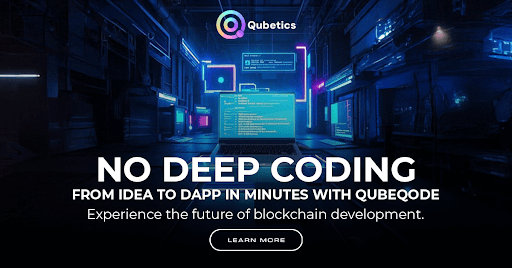Polygon continues to draw industry attention despite ongoing price consolidation below the $0.20 mark. As Ethereum gas fees climb and competition intensifies from networks like Arbitrum and Starknet, Polygon is betting on its long-term strength through enterprise-grade adoption. Its zkEVM rollout, plus new integrations with JioCoin and Starbucks, is pushing mainstream usage forward. Still, the POL token has seen price compression, hovering around $0.1902, as bears attempt to maintain short-term control. Yet beneath the sideways chop lies a scaling powerhouse that remains a contender for long-term breakout.
On the modular blockchain frontier, Celestia is making waves with its unique design and impressive developer traction. By decoupling consensus and data availability from execution, Celestia enables a flexible and scalable framework for Layer 2 networks and custom chains. Major integrations with projects like Polygon and Optimism point to a growing role in blockchain interoperability. Its Data Availability Sampling (DAS) and PayForBlobs model give developers the tools to optimize costs and performance across environments. Celestia isn’t just theoretical—it’s operational and evolving.
But among the growing noise, Qubetics ($TICS) is rapidly separating itself as the top crypto presale to watch. With a presale ROI that’s already shattered expectations, and utility designed to fix real gaps in the digital finance stack, Qubetics isn’t just talking about potential—it’s proving it with adoption, tools, and results. The QubeQode IDE and token ecosystem are making life easier for builders, professionals, and businesses who don’t have time for gimmicks or patchwork protocols.
Qubetics: All-In-One Ecosystem for Developers
Qubetics was never built to compete on buzz. It was built to give creators, developers, and users a better way to interact with Web3 tools without the fragmentation. One of its most powerful components is the QubeQode IDE—a no-code and low-code smart contract platform that helps teams build, test, and deploy blockchain applications without touching archaic coding languages.
Think of it as the Wix of Web3 development—except faster, cheaper, and fully integrated with multi-chain deployment tools. Whether a fintech startup wants to tokenize real-world assets or an enterprise needs to issue compliant digital bonds, Qubetics streamlines the process while keeping control in the user’s hands.
It’s this level of practical application that’s put Qubetics in conversations across dev groups, enterprise blockchain consortia, and decentralized finance circles. Its tools are built not just for speculation, but for long-term integration—and that alone gives it a leg up over other so-called top crypto presale tokens.
Qubetics Presale: 31 Stages Deep and Still Delivering
Currently in its 31st stage, the Qubetics crypto presale is moving fast. Each $TICS token is priced at $0.1902, and the momentum is clear: more than 509 million tokens sold, over 25,000 holders, and $16.3 million raised—and counting. Early adopters from Stage 1, who joined at just $0.01 per token, are already sitting on a 1802% return.
Even now, there’s still a strong upside. Entry at $0.1902 positions new participants for a 425% ROI if the token reaches just $1 post-presale. At $5, that jumps to 2527%, and at $6, it becomes 3053%. If the token hits $10, the return skyrockets to 5155%, and should it reach $15 after the mainnet launch, the ROI balloons to 7783%.
It’s rare to see this level of ROI potential tied to real product functionality, but that’s what sets Qubetics apart. This isn’t a meme project. This is infrastructure—functional, secure, and ready to scale.
Polygon (POL): Sidechain Strength, Institutional Uptake
Polygon is currently consolidating just under $0.20, with bears holding tight to near-term resistance at $0.1938. Despite price headwinds, the long-term case for Polygon remains solid. Its strategic partnerships—from Starbucks’ NFT loyalty program to JioCoin’s integration into the Indian telecom ecosystem—underscore its credibility as an Ethereum Layer 2 with real-world traction.
Polygon’s zkEVM availability also puts it at the forefront of ZK-Rollup adoption, allowing it to handle over 65,000 TPS while keeping fees lower than Arbitrum or Optimism. This kind of throughput matters, especially during periods of high Ethereum congestion.
Price forecasts for 2025 suggest POL could reach a high of $1.57, with long-term targets as high as $13.01 by 2031. For participants seeking the top crypto presale alternatives that are already listed and developing steadily, Polygon remains a strategic pick.
Celestia (TIA): Modular Architecture Setting It Apart from Traditional Chains
Celestia offers something truly different—a modular blockchain model where developers don’t have to rely on one-size-fits-all systems. It separates the core layers of a blockchain—execution, consensus, and data availability—allowing teams to create custom execution environments while still benefiting from Celestia’s robust validation and DAS infrastructure.
The network’s TIA token enables PayForBlobs transactions, letting Layer 2s post data efficiently while paying per byte, not per transaction. This is a game-changer for scalability, especially as the number of rollups and app-specific chains grows.
Tokenomics-wise, TIA is capped at 1.12 billion tokens, with strategic allocation across core contributors, ecosystem development, seed participants, and community airdrops. As more developers adopt modular frameworks, Celestia’s presence is set to expand, especially through its ties with major projects like Optimism and Polygon.
Final Thoughts
Buzz is cheap. Utility, adoption, and community traction are what separate the top crypto presale projects from short-lived hype coins. Qubetics offers not only raw ROI potential but a development suite that rivals legacy systems in speed, flexibility, and ease of use. Polygon remains a juggernaut in the Ethereum scaling race, and Celestia is carving out a new lane in modular architecture.
All three bring something powerful to the table. But for participants seeking explosive potential paired with grounded utility, Qubetics stands out—and the presale clock is still ticking.
For More Information:
Qubetics: https://qubetics.com
Presale: https://buy.qubetics.com/
Telegram: https://t.me/qubetics
Twitter: https://x.com/qubetics
FAQs
1.Is Qubetics really the top crypto presale in 2025?
Yes. Qubetics has outperformed expectations with over 509 million tokens sold and an ROI of 1802% for Stage 1 backers.
2.What’s the current stage of the Qubetics crypto presale?
Qubetics is in Stage 31, with $TICS tokens priced at $0.1902 and ongoing presale access still available.
3.How does Qubetics compare to Polygon and Celestia?
While Polygon focuses on Ethereum scaling and Celestia targets modular data availability, Qubetics offers a full-stack development ecosystem and unmatched presale traction.
4.What is QubeQode IDE and why is it important?
QubeQode is Qubetics’ no-code/low-code platform that lets professionals and enterprises deploy blockchain apps without writing complex code.
5.Can Qubetics reach $10 after launch?
Analyst projections suggest $10 is within range based on tech adoption, community growth, and presale momentum.




